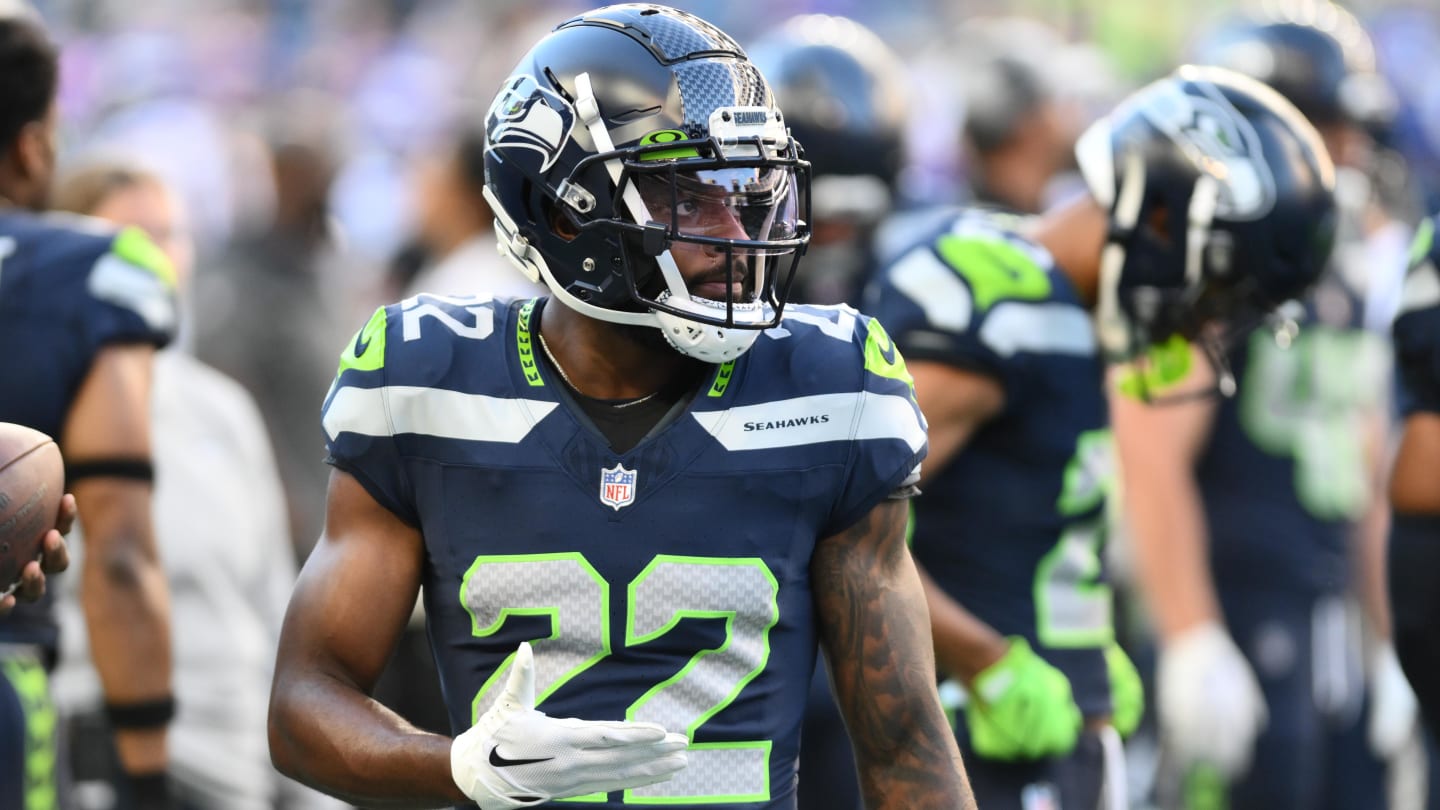Entertainment
Toxic Masculinity and Big vs. Aidan: How 'Sex and the City’s' love triangle has aged
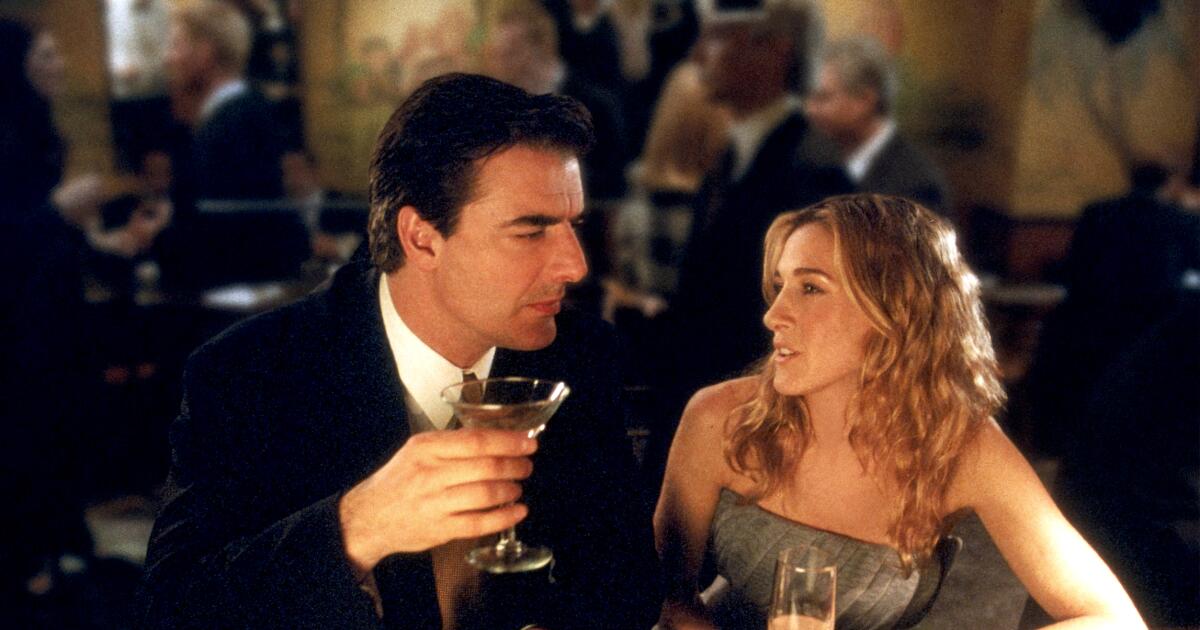
Ballet flats, low-rise jeans and Cosmopolitans are back in style, so it is the perfect time for all six seasons of “Sex and the City” to stream on Netflix. The HBO series, previously exclusively on Max, premiered April 1 on the streaming service, where a wider subscriber base pulled in first-time viewers and rewatchers who are ready and willing to share their thoughts on social media.
This week, there has been increasing buzz about one of the iconic episodes in the series, when Carrie Bradshaw invites Mr. Big, the ex-boyfriend with whom she cheated on her current boyfriend Aidan, to the latter’s cabin.
I couldn’t help but wonder — does Carrie Bradshaw’s Big versus Aidan love triangle still feel relevant?
When it first premiered in June 1998, “Sex and the City,” an adaptation of Candace Bushnell’s newspaper column and book, broke a lot of barriers with its depiction of four single women in their 30s and 40s navigating their friendship and vibrant sex lives in NYC. (It also fell short in a myriad of ways, namely in how incredibly white, heteronormative and privileged the characters were. While some of this changed in Max’s “And Just Like That,” for the purposes of this essay, I’m just focusing on the original series, not the films or subsequent spinoff.)
Since airing, it’s been common parlance to declare people specific archetypes promulgated by the show either via the four main friends — are you a Carrie or a Samantha? — or by the type of love interest one embodies — is he your Mr. Big or your Aidan?
Sarah Jessica Parker, as Carrie Bradshaw, and John Corbett as Aidan Shaw in an episode from “Sex and the City.”
(HBO)
In particular, when it comes to Carrie’s love interests, both men were pretty flat characters. Big is the stereotypical, wealthy, charming playboy with serious commitment issues who just needs the right woman to come along and “fix” him. Aidan, in contrast, is the stable, Hallmark Christmas movie boyfriend who would love nothing more than to get married and stay home eating fried chicken — but he can skew boring.
The bad boy versus nice guy trope is a staple of mainstream ‘90s rom-coms. Millennials were raised on a diet of toxic, patriarchal relationships on film and TV, where male characters spend the majority of their time treating female characters horrendously, and then redeeming themselves in the final 20 minutes with one grand gesture. We became a generation trained to wait for our Bigs to catch on to their mistakes, come down the street in a shiny limo, and beg forgiveness. If he hasn’t come back and repented, it’s only because it isn’t our last 20 minutes yet.
But does that trope still work in 2024? I’ve spoken with friends of mine — die-hard Big fans who cheered from our sorority house living room when he showed up at Carrie’s Paris hotel in the 2004 series finale — who are now rewatching the series and wondering why they were so hung up on Mr. Big in the first place. This sentiment has been echoed on social media, with viewers who are rewatching asking if Big has always been this infuriating. Is it just because millennials, now in their 30s and 40s, are at a more stable life stage where we can look back at Big as the walking, talking embodiment of a red flag? Or has society itself shifted away from the Mr. Bigs of the world?
Well, as it turns out, both things can be true.
“In your 20s, your life stage is about searching for identity and collecting experiences. Big was exciting because he was giving Carrie all of these new experiences,” says Israa Nasir, a mental health therapist who treats millennials and Gen Z adults going through life transitions. She says when she first watched the show, she remembers thinking Big was amazing. “But in your 30s and 40s you’re in a different life stage developmentally, you’re more about finding roots. Millennials are rooting down, we’re looking for stability. We can look back at Big and be like ‘Big was a huge red flag, because he couldn’t give her stability, which is required to move through the life stages.’”
This stability versus excitement is a conversation topic in Season 3, Episode 7, called “Drama Queens.” Over brunch, Carrie tells her friends she’s been waking up in the middle of the night sweating because she’s so anxious about the fact that everything with Aidan has been going so well.
“I’m used to the hunt, and this is effortless,” Carrie says. “You’re not getting the stomach flip,” adds Samantha. “Which is really just the fear of losing the guy,” says Miranda, ever the pragmatic one. Carrie admits she’s not used to being with someone who doesn’t do the “ever-seductive withholding dance.” When Miranda says she’s comfortable and safe and happy with Steve, Carrie deadpans, “Are you dating a man or a minivan?” Samantha tells her, “Your relationship is my greatest fear realized.”
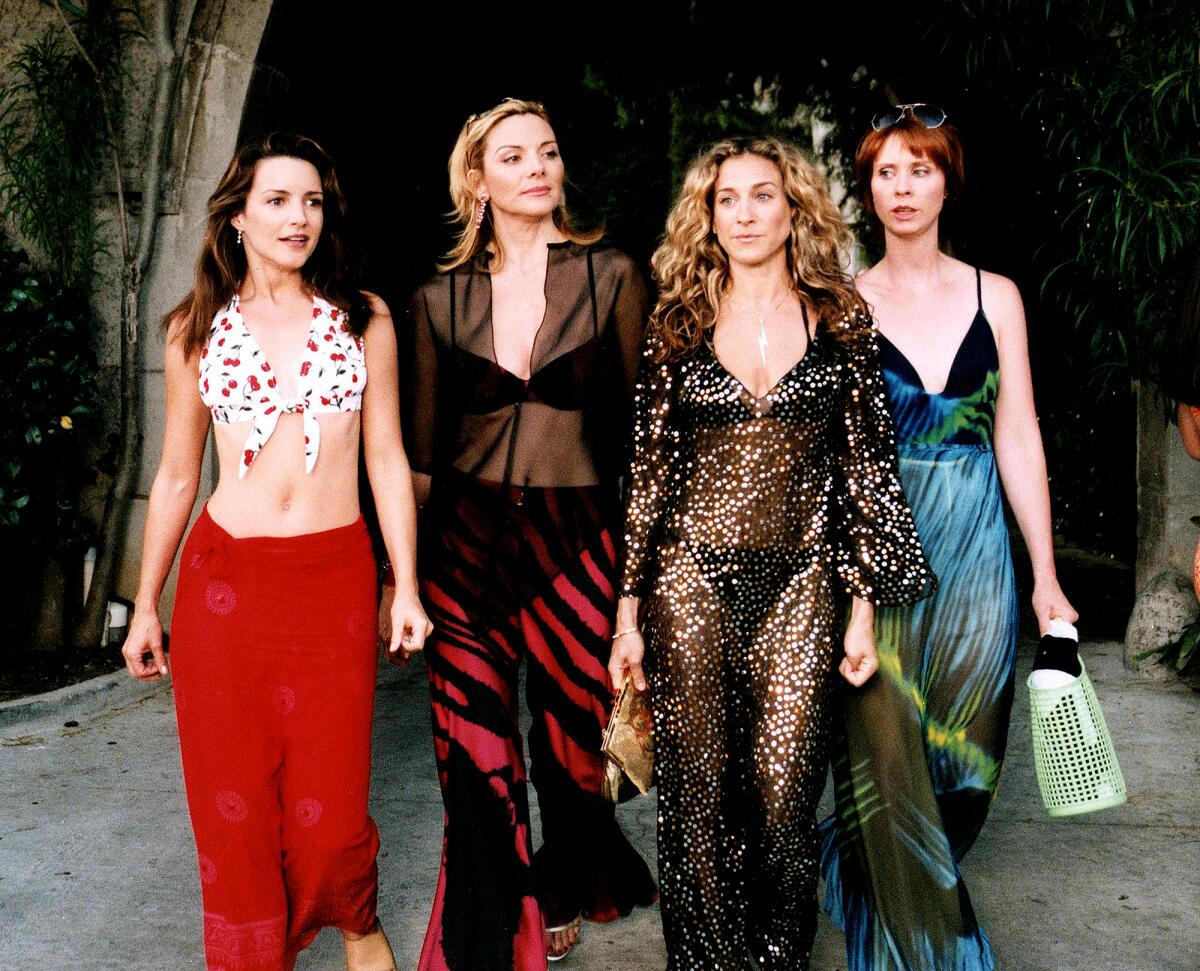
From left, Kristin Davis, Kim Cattrall, Sarah Jessica Parker and Cynthia Nixon in HBO’s “Sex and the City.”
(Craig Blankenhorn / HBO)
Nasir says that there is a generational difference in how we are engaging with romantic relationships, just by virtue of the world changing and an increase in emotional literacy.
“A 25-year-old current Gen Z person has way more access to self-help content, personal growth, self-awareness, all of those things that help you define yourself and relationships versus a 25-year-old millennial in the mid-2000s who did not really have that,” says Nasir.
“Millennials inherited a very patriarchal system. Many of us are entering the space of self-awareness for the first time whereas Gen Z is already there so their expectations from a relationship are very different.”
Nasir adds that Gen Zers have changed the gender dynamics of dating. They are much more fluid when it comes to identity and sexuality, they’re more open to polyamory, and they don’t engage in the same debates about who pays, who initiates sex, etc. — themes that are a large part of “Sex and the City’s” plotlines. She says when speaking with her Gen Z patients about relationships, she often thinks about the episode where Miranda bluntly tells two young women that maybe “he’s just not that into you.” It was met with horror when Miranda said that, but Nasir said that kind of factual, upfront, candid conversation is par for the course among the younger generations.
In Nasir’s opinion, society hasn’t replaced patriarchal archetypes, we’ve just added more to the spectrum. And even though there are still a plethora of heteronormative love triangles and television often still adheres to the status quo, nuance has crept in. In Netflix’s “Never Have I Ever,” she points out that the lead love interest, Paxton, is the popular guy but with a sensitive side. Nasir says she sees more of an emphasis on platonic love, an expansion of what a long-term soulmate relationship can be, as depicted in series like “Grace and Frankie” or “Insecure.” She compares it with how the archetype of the woman on television changed and expanded from the ‘50s to the ‘90s. “From the ‘90s to the 2020s, there are more types of relationships that you see. We continue with every generation to add to the baseline,” Nasir says.
Suzanne Leonard is a professor of race, gender and sexuality studies at Simmons University in Boston. “We’ve been in a long, 20-year process of undoing the allure of Mr. Big,” says Leonard, adding that she doesn’t know whether the storylines on television have changed as much as the viewership has. “Audiences are much more aware of the dangers of toxic masculinity and that doesn’t read as sexy anymore. I think you have more sophisticated feminist viewers.”
“It’s sort of seeing what was actually right in front of us the whole time, but we couldn’t see it,” she adds. Leonard partly attributes this shift in our views of romance, this fatigue around brooding, emotionally unavailable characters, to the post-#MeToo moment. (She even points out that Chris Noth, the actor who played Big, was accused by several women of sexual abuse).
“Male power and male violence has been so sexualized and romanticized, and in the ‘90s and early 2000s, heterosexual women were really encouraged to be attracted to that type,” says Leonard. #MeToo created an awareness and reckoning with toxic masculinity that forced people to realize what society pushed as alluring might in fact be red flags.
Our emotional vocabulary around these kinds of relationships has also shifted, as therapy-speak infuses our everyday language. Twenty years ago, we didn’t say someone was “toxic” or “gaslighting” or “love bombing.” “It has been able to give us labels to very normal human experiences,” says Nasir. And when you can identify these experiences, you can manage them better by naming them and walking away.
Last week when “Sex and the City” hit Netflix, there was buzz around how Gen Z would react, with some (correct) predictions that the “Carrie is the toxic villain” debate would ramp up as it did when “And Just Like That” aired. “Carrie is the worst human being I have ever seen,” said one first-time watcher. (In contrast, pop star Olivia Rodrigo proudly wore a “Carrie Bradshaw AF” shirt while performing in New York on April 5.)
Right on cue, first-timers began to react to the love triangle storyline on X, formerly Twitter, and TikTok, expressing how upset they were about the Carrie-Big-Aidan triangle. “Now why would Carrie cheat on Aidan with Mr.Big!” tweeted one viewer. “Personally I think Carrie Bradshaw should’ve been court-martialed for inviting Big to Aidan’s cabin,” wrote another.
Then the “Carrie Is Aidan’s Big” discourse began. It’s a debate that felt familiar — was Aidan pathetic for saying he didn’t feel comfortable with her being friends with Big after she had an affair or was he just setting boundaries? When he agreed to get back together with her, should he have wholeheartedly trusted her, and dropped his identity as the victim? Or was Aidan trying to change Carrie into something she wasn’t, and their lifestyles never would have really meshed anyway? And it wasn’t all anti-Big arguments. Did she belong with Big, so they could be toxic together? And there was perhaps the most cutting tweet of all, “Carrie deserved that post-it.”

Did Carrie belong with Big, so they could be toxic together?
(Craig Blankenhorn / HBO)
Pop culture historian Jennifer Keishin Armstrong wrote the book “Sex and the City and Us,” and says she’s always hated Carrie and Big together. “Mr. Big does not come around in the end; that’s the point of your Mr. Big,” says Armstrong, adding that Carrie shouldn’t end up with either of the two men. She is of the mind that Big was terrible for Carrie, but Carrie was terrible for Aidan.
“Television is trying to reflect real life, but it’s hard to get TV out of your head while you’re living your life. This is part of why Mr. Big and Carrie ending up together upsets me because I think it gives false hope when most relationships like this one do not have a happy ending in real life.” (For what it’s worth, the real Carrie agrees.)
Armstrong says the gold standard on TV is now two people with a real friendship who are also attracted to each other. She sees “The Office’s” Jim and Pam as an influential model of this kind of love.
“I do think relationships have gotten more nuanced than they were in the early 2000s,” she adds. “If we look at the TV side of things, think of ‘Fleabag’, whose entire finale is predicated on a very complex, romantic relationship that doesn’t work out the way we’re hoping in our soul, and it’s beautiful.”
It’s hard to imagine how groundbreaking it would have been to have Big and Carrie’s last conversation be them acknowledging their love for each other but promising, “It’ll pass.”
In the series finale, Carrie has a final message about how the most important relationship is the one you have with yourself — but this message is undermined by the fact that this is also the moment she looks at her phone, and for the first time in six seasons, we find out Big’s real name.
I propose an alternate, healthier ending for Big and Carrie — and it already exists in canon. It’s in Part 1 of the series finale, when she confronts Big for boomeranging back into her life right when she’s moving on.
“You do this every time,” Carrie tells Big. “Every time! What, do you have some kind of radar: Carrie might be happy. It’s time to sweep in and s— all over it?”
Big tells her he made a mistake and insists “it’s different this time,” but Carrie interrupts him to say she is done.
“You can drive this down street all you want,” she says, throwing his signature move back in his face. “Because I don’t live here anymore.”

Movie Reviews
What If Jessica Chastain and Anne Hathaway Had a Mother-Off, and We All Lost?
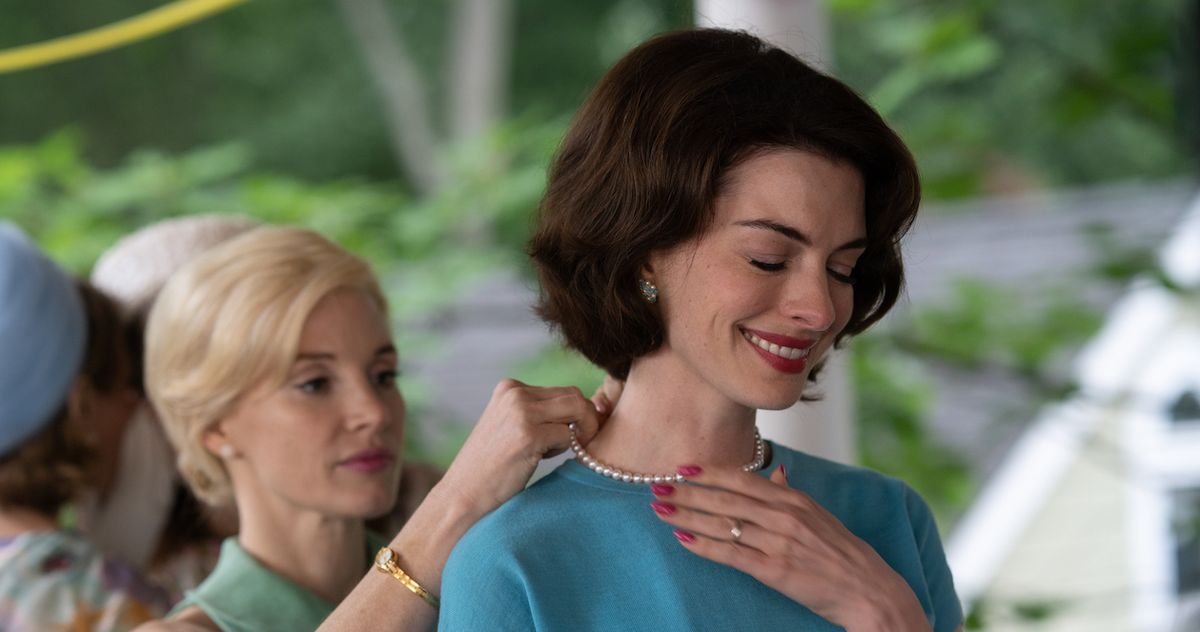
The strange case of Mothers’ Instinct.
Photo: Neon
There’s a new movie starring Jessica Chastain and Anne Hathaway out this week, which is normally the sort of thing you’d expect to have heard about. But, after its release in the U.K. months ago, Mothers’ Instinct is slipping into U.S. theaters with as little splash as an Olympic diver nailing a triple somersault tuck. The film, a thriller directed by Benoît Delhomme, is getting the treatment typically reserved for a disaster, which is a shame, because I’ve been dying to discuss it with someone, and that’s hard when no one has any idea what you’re on about. Mothers’ Instinct is, indeed, pretty terrible, and not in the so-bad-it’s-good sense, and yet there’s something strangely moving about it. It’s a poignant example of how what looks like rich material to actors can turn out to be lousy material for audiences. Mothers’ Instinct is a remake of a 2018 Belgian film adapted from a novel by Barbara Abel, and watching it, you can appreciate exactly why these two major actors signed on to star in it. Funnily enough, those same qualities go a long way toward explaining why the movie doesn’t work.
Mothers’ Instinct isn’t camp, but it’s close enough that if you squint, you can almost see a version of the film that tips into something broader. Of course, if you squint, you wouldn’t be able to appreciate how immaculately Chastain and Hathaway are costumed. They look incredible — not like two 1960s housewives, which is what they’re playing, so much as two people who keep switching outfits because they can’t decide what to wear to the high-end Mad Men–themed party they’re headed to later. As Alice, Chastain is styled like a Hitchcock blonde in pin-curled ash updos and cardigan sets, while as Alice’s neighbor and friend Céline, Hathaway is given a Jackie O. look that involves a shoulder-length bouffant, pillbox hats, and gloves. They’re cosplayers in a gorgeous, airless setting, adjoining houses on a street that might as well be floating in space, the husbands (played by Anders Danielsen Lie and Josh Charles) vanishing to work for long stretches. The artificiality of this intensely manicured re-creation isn’t to any particular end, which gives the whole movie the air of a Don’t Worry Darling situation in which no one ever wakes up to the twist, instead sleepwalking through a stylized dream of Americana.
In fact, while Alice is restless over having given up her job as a journalist to take care of her son Theo (Eamon O’Connell), and Céline gets ostracized by the community after the death of her son, Max (Baylen D. Bielitz), Mothers’ Instinct isn’t actually all that interested in the pressures of living under a repressive 1960s patriarchy. Instead, it’s about another time-tested theme, one that’s best summed up as: Bitches be crazy. The perfect sheen of its surfaces — Delhomme, who’s making his directorial debut, is a cinematographer who started his career with The Scent of Green Papaya and has since worked with everyone from Tsai Ming-liang to Anton Corbijn — is paired with a score that shrieks unease from the opening scene, in which Céline is thrown a surprise birthday party. The source of this suspense isn’t revealed until later, after Max takes an unintended swan dive off the porch and the women’s friendship is threatened by grief, guilt, and suspicion. Is Céline in mourning, or does she actually irrationally blame Alice for what happened while developing an alarming fixation on Theo? Is Alice right to be suspicious of her bestie, who’s unable to have another baby, or is she being paranoid because the mental illness that previously resulted in her hospitalization has returned? Is it odd that two feminist actors jumped to participate in a film that traffics so freely in unexamined stereotypes about women and hysteria?
Not, it seems, when the opportunities to stare coldly into space or look on in glassy betrayal are this good. I’m not trying to sound snide here — the characters in Mothers’ Instinct have no convincing inner lives at all, but the exterior work of the actors playing them is choice stuff. When Alice and Céline are getting along, Chastain and Hathaway nuzzle together supportively like long-necked swans. When things start to go south, Chastain opts for an aloof distance with stricken eyes, while Hathaway prefers a labored smile that drops as soon as she’s alone. Theirs is a brittle-off no one can win, but both try their hardest anyway. The effort reaches its crescendo at Max’s funeral, where Hathaway’s enormous eyes glimmer through the barrier of a black lace veil and Chastain tilts her face up so that the elegant tracks of past tears can gleam in the light. The scene ends with Céline collapsing in anguish while Alice rushes her tantrumming child out of the church, an explosion of drama that would be so much more effective if the movie had left any room for modulation instead of starting at 10 and staying there. Mothers’ Instinct gets much sillier before it ends, but given how little it establishes as its baseline tone, it doesn’t feel fair to say it goes off the rails. Rather, as Hathaway stares brokenly into the dark and Chastain tears apart her nightstand drawer in panic, what comes to mind is how great a set of GIFs this movie will make someday. That’s not much, but I guess it’s something?
See All
Entertainment
Tyler Perry calls out 'highbrow' critics, defends his fans: 'Don't discount these people'
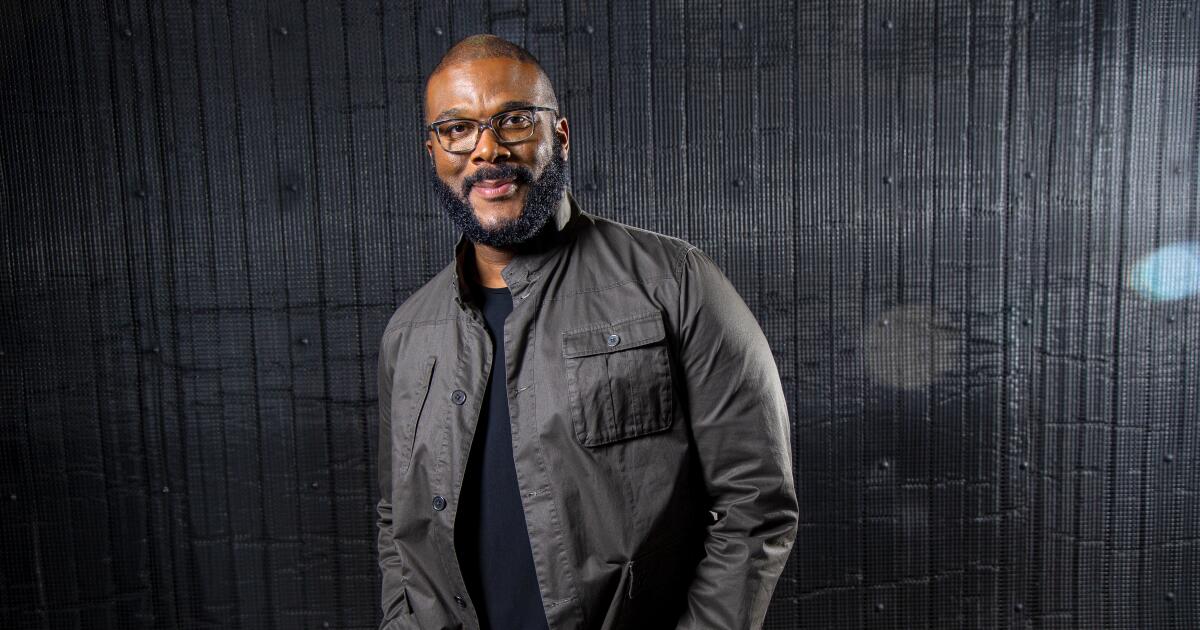
Tyler Perry’s last feature film earned a rare 0% on Rotten Tomatoes — a point that’s apparently of little concern to him.
The billionaire filmmaker, best known for his franchise character Madea, is far more interested in the opinions of his fans than those of “highbrow” critics, he said on the “Baby, This is Keke Palmer” podcast.
“For everyone who is a critic,” Perry said in the Tuesday episode, “I have thousands of — used to be — emails from people saying: ‘This changed my life. Oh, my God, you know me. Oh, my God, you saw me. How did you know this about my life and my family?’ So that is what is important.”
Critiques of Perry and his purportedly flat depictions of Black characters date back to his early directing days. Spike Lee, for one, in 2009 famously alluded to Perry’s work while complaining about the “buffoonery” in Black comedy. More recently, playwright Michael R. Jackson took his turn swinging at the movie mogul in his metafictional musical “A Strange Loop.”
In the number “Tyler Perry Writes Real Life,” Jackson’s protagonist — a Broadway usher who dreams of being a writer — denounces Perry’s oeuvre: “The crap he puts on stage, film and TV / Makes my bile want to rise!”
The song wasn’t born of any “personal vendetta,” Jackson told Washington Post Live in 2022. “It’s really about actually taking Tyler Perry’s work very seriously, because it’s often held up, often by Black communities, as sort of, like, the end-all-be-all of what one can do as a Black artist.”
“I just wanted to sort of problematize that and satirize that,” he said.
Upon Palmer referencing Jackson’s musical jab, Perry told the podcast host, “I know for a fact that what I’m doing is exactly what I’m supposed to be doing.”
When it comes to critics in general, he continued, it’s best to “drown all that out.”
“We’re talking [about] a large portion of my fans who are disenfranchised, who cannot get in the Volvo and go to therapy on the weekend,” he said. “So you’ve got this [Black critic] who is all up in the air with his nose up looking at everything, and then you’ve got people like where I come from, and me, who are grinders, who really know what it’s like, whose mothers were caregivers for white kids, and were maids and housekeepers.”
He added: “Don’t discount these people and say that their stories don’t matter. Who are you to be able to say which Black story is important or should be told? Get out of here with that bull-.”
Corey Hardict, who co-stars in Perry’s latest film “Divorce in the Black,” last week invoked a similar defense for the critical bomb: “I mean, the people love the movie and we do it for the people — that’s who I do it for. If the culture’s rocking with it, it’s all love. So it’s fine.”
Perry’s podcast comments have already garnered backlash online, with Preston Mitchum of the reality show “Summer House: Martha’s Vineyard” writing Wednesday on X, “Yes, because writing and producing a movie where a Black woman from a small town cheated on her husband, acquired HIV, then ended up physically disabled is absolutely the groundbreaking Black story we need to see.”
Mitchum’s post seemingly refers to Perry’s 2013 film, “Temptation: Confessions of a Marriage Counselor.”
Palmer defended Perry against other disparagers online, writing Wednesday on X, “The enemy isn’t Tyler it’s the system that makes it hard for multiple black artist[s] to shine at one time.”
“Tyler is not the gatekeeper of all black stories he’s just one creative who broke through the system,” she wrote. “Advocating for others to do the same is the fight, not hating Tyler for his work that many do love.”
Perry in 2019 celebrated the grand opening of his 330-acre Tyler Perry Studios in Atlanta. He created the complex with the hope of promoting cultural diversity in the film industry, he told The Times in 2016.
“Sometimes I drive around here by myself and think, ‘Is this too much, or is this what I’m supposed to do?’ ” Perry said. “The answer is obvious. When this fell into my lap, I said, ‘I have to do this.’ This is the endgame.”
Movie Reviews
Movie Review: Twisters – Kenbridge Victoria Dispatch

Movie Review: Twisters
Published 11:15 am Friday, July 26, 2024
1 of 3
Let me immediately cut to the chase (pun intended) and answer the question you’re all wondering. TWISTERS is a fun and entertaining summer blockbuster, but it in no way holds a candle to its predecessor TWISTER (1996). Still, the CGI is intense, the sound design is loud and immersive, and the lead performances — especially from Glen Powell — are sure to wow.
Following a horrible tragedy, meteorologist Kate Carter (Daisy Edgar-Jones) has spent years out of the storm chasing business. She now lives in the largely tornado-less New York City, using her innate understanding of storm systems to direct weather alerts. But when her old friend Javi (Anthony Ramos) begs her to join his privately-funded start-up, which is designed to use military-grade radars to learn more about tornadoes and save communities in Oklahoma, she agrees to give him a week of her time. It’s not too long before “tornado wrangler” influencer Tyler Owens (Glen Powell) enters the scene with his ragtag group of weather enthusiasts, creating a competition between scientific research and entertainment. Each group races to be the first on the scene, with Kate and Javi seeking to model the tornado and Tyler trying to get the most likes on social media. But can the two groups find a way to work together or will the competition be more vicious than the tornadoes?
I am admittedly judging myself for caring too much about a summer blockbuster’s plot, because that’s not really what any of us sign up for with these films. But the various encounters with tornadoes begins to feel slightly repetitive and creates pacing issues, making a two-hour film feel like its runtime. And for some reason, it seems like there is something missing when it comes to portraying the sheer terror of experiencing F5 tornadoes, unlike the original film; the main set pieces were not as memorable.
The film does little to make you care about whether the characters live or die, relying on Glen Powell and Daisy Edgar-Jones’s chemistry and natural charisma to do the heavy lifting. The second Powell steps out of his gigantic truck, with his cowboy hat and belt buckle sparkling in the sun… sorry, I just lost my train of thought… and that’s what TWISTERS is hoping. Powell’s magnetism is sure to knock you off your feet and distract you from the film’s middling plot. And while Edgar-Jones’s performance is more muted, due to her character’s battle with PTSD, she brings an important level of humanity to the film and a character to both see yourself in and root for. More than that, her chemistry with Powell is off the charts and will certainly leave you wanting their relationship explored more in a sequel. The supporting characters are not given much to work with and as such, don’t really engender much concern when they are in deadly situations.
One element of TWISTERS I liked more than TWISTER is it showed the emotional and financial toll tornadoes ravage on communities. Of course, that is an element of the first film, but TWISTERS does a great job showcasing the speed in which tornadoes can overtake and devastate a community, both in loss of life and loss of property. This, juxtaposed with the “fun” in chasing storms brings a real human element to the film. I also want to give a shoutout to the movie not having any sad animal scenes (apart from a possible run-in with a chicken). So for all of you sickos excited to see another flying cow, this isn’t for you.
TWISTERS is the exact kind of movie you need to see in a theater so you can get the full experience. Where else can you admire the cinematography, get immersed in the sound design, and lose yourself in Glen Powell’s cowboy hat and million dollar smile? I saw it in a Dolby theater and was blown away.
There is no end credit scene.
My Review: B
-

 World1 week ago
World1 week agoOne dead after car crashes into restaurant in Paris
-

 Midwest1 week ago
Midwest1 week agoMichigan rep posts video response to Stephen Colbert's joke about his RNC speech: 'Touché'
-

 News1 week ago
News1 week agoVideo: Young Republicans on Why Their Party Isn’t Reaching Gen Z (And What They Can Do About It)
-

 Movie Reviews1 week ago
Movie Reviews1 week agoMovie Review: A new generation drives into the storm in rousing ‘Twisters’
-

 News1 week ago
News1 week agoIn Milwaukee, Black Voters Struggle to Find a Home With Either Party
-

 Politics1 week ago
Politics1 week agoFox News Politics: The Call is Coming from Inside the House
-

 News1 week ago
News1 week agoVideo: J.D. Vance Accepts Vice-Presidential Nomination
-

 World1 week ago
World1 week agoTrump to take RNC stage for first speech since assassination attempt





